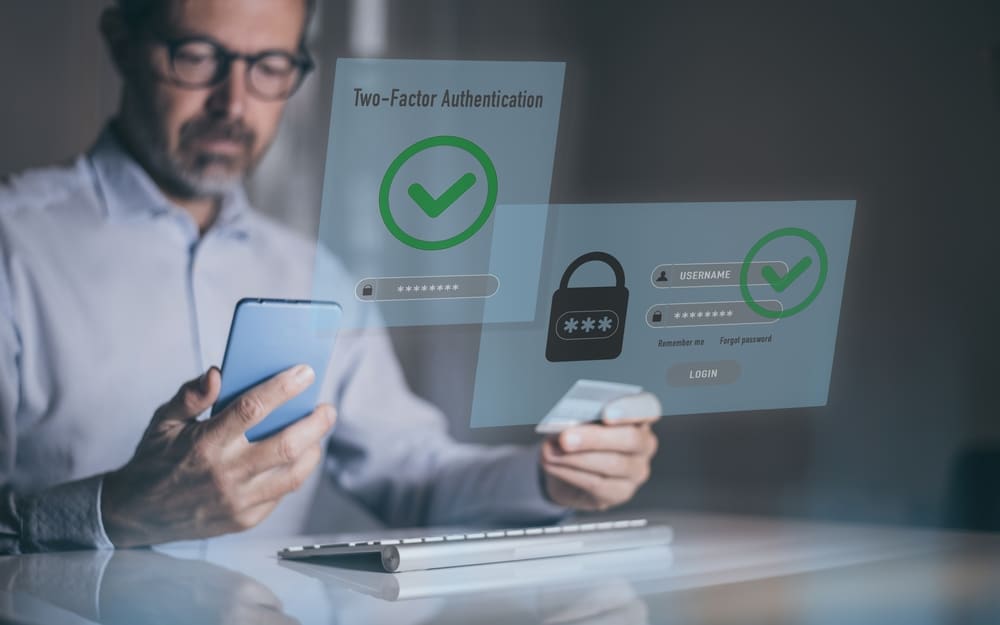Security is among the aspects that all crypto users must prioritize to avoid losing their funds. There are several security measures that you can adopt to maneuver the crypto world securely. One of them is two-factor authentication. If you are wondering what it is all about, we recommend reading this article, as we have explained everything you need to know about two-factor authentication.
What is Two-Factor Authentication?
Simply put, two-factor authentication (2FA) is a unique security measure requiring crypto users to submit two different authentication factors in order to access their accounts. These factors are:
📈🤖 Unlock unparalleled trading potential with GPT Stocks Master AI! Revolutionize your portfolio, leveraging real-time insights and predictive analytics. Don’t miss out – step into a world where precision and profitability meet. Ready to transform your trading journey? Click “Master My Trades” now for your exclusive access! ✨🚀📊
1. Knowledge factor: It could be the user’s password or PIN.
2. Possession factor: It represents something owned by the user, such as a mobile device, smart card, or a security token.
The idea behind two-factor authentication is that even if a third party guesses a user’s PIN or password, they’d still need the possession factor to gain access to their trading account. As such, the risks associated with unauthorized access are greatly minimized.
In most cases, the two-factor authentication process involves receiving a one-time code via SMS or Google Authenticator and using biometric data, such as face recognition or fingerprints. Besides crypto, two-factor authentication has been adopted in other sectors like banking.
2FA Methods
Here are the various methods of two-factor authentication:
Text Message codes
As mentioned, users using SMS in the two-factor authentication process get one-time codes, which they must key into their accounts’ login pages to gain access. However, the risks of SIM swaps make the use of SMS less secure.
Mobile Authenticator Applications
Mobile apps like Authy and Google Authenticator generate one-time or time-based codes, which users use to access their accounts.
Email Codes
Users can choose to receive one-time codes via their email addresses. This method is more secure than SMS.
Biometric Verification
After providing your biometric data, you can use a biometric identifier like a facial or fingerprint scan to authenticate yourself and get access to your account.
How Two-Factor Authentication Works
As stated, you need a knowledge factor and a possession factor to adopt two-factor authentication as your security measure. Here is how 2FA functions:
Crypto user Initiates Login
Go to the login page of your account and submit your email/phone number.
User Enters Password/PIN
Provide the knowledge factor (password/PIN). If the server validates it, you will requested to provide the possession factor.
Server Asks for Possession Factor
At this stage, you need to enter the one-time code sent via your email or SMS. Furthermore, you can grab a random code generated by an authenticator app. Once the possession factor is validated, you’ll be granted access to your account.
How to Set up 2FA for Your Exchange Account
In this guide, we’ll demonstrate how to set up 2FA on Coinbase, a leading centralized exchange in the United States. Here are the steps to follow:
1. In your Coinbase account, go to “Setting” and then click “Security Setting.”
2. Press the “2-Step Verification” button and choose “Authenticator.”
3. After enabling authenticator support, Coinbase will display a QR code, which you need to scan using an authenticator mobile app.
4. In the authenticator app, a random six-digit code will show. Enter it in your Coinbase account and press “Enable.”
After doing this, two-factor authentication will be employed in your login procedure.
Multi-Factor Authentication vs. Two-Factor Authentication
While both multi-factor authentication and two-factor authentication offer improved security, the former makes it much harder for third parties to access accounts because they require users to provide more than two factors. With multi-factor authentication, users can use a fingerprint, a one-time SMS code, and a password.
Security Issues Associated With 2FA
As mentioned, SIM swaps make the two-factor authentication process via SMS codes less effective. Moreover, bad actors may obtain copies of the users’ fingerprints and use them to access their targets’ accounts.
Despite the security issues, two-factor authentication has proven to be more effective than the use of just passwords/PINs.

